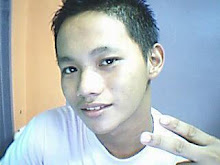
Education in the Philippines has similar features to that of the United States.
Filipino children enter public school at about age four, starting from Nursery up to Kindergarten. At about seven years of age, children enter a primary school (6 to 7 years). This is followed by secondary school (4 years). Students then sit for the College Entrance Examinations (CEE), after which they enter collegiate school (3 to 5 years). Other types of schools do exist, such as Private schools, Prepatory schools, International schools, and Science High scholls Also, several nationalities, such as the Chenese, British, Americans, and the Japannese also have their own schools.
The school year in the Philippines starts in June of one year and ends in March of the next, with a two-month summer break for April and May, one week of semestral break (the last week of October), and a week or two of Christmas break.
History and development:
Earlier times:
As early as in pre-Spanish times, education was informal, unstructured, and devoid of methods. Children were provided more vocational training and less academics (3 Rs) by their parents and in the houses of tribal tutors.
Spanish period:
Major changes in education system happened during the Spanish colonization. The tribal tutors were replaced by the Spanish Missionaries. Education was religion-oriented. It was for the elite, especially in the early years of Spanish colonization. Access to education by the Filipinos was later liberalized through the enactment of the Educational Decree of 1863 which provided for the establishment of at least one primary school for boys and girls in each town under the responsibility of the municipal government; and the establishment of a normal school for male teachers under the supervision of the Jesuits. Primary instruction was free and the teaching of was compulsory. Education during that period was inadequate, suppressed, and controlled. By 1898, enrollment in schools at all levels exceeded 200,000 students.
First Republic:
The defeat of Spain by American forces paved the way for Aguinaldo's Republic under a Revolutionary Government. The schools maintained by Spain for more than three centuries were closed for the time being but were reopened on August 29, by the Secretary of Interior. The Burgos Institute in Malolos, the Military Academy of Malolos, and the Literary University of the Philippines were established. A system of free and compulsory elementary education was established by the Malolos Constitution.



No comments:
Post a Comment